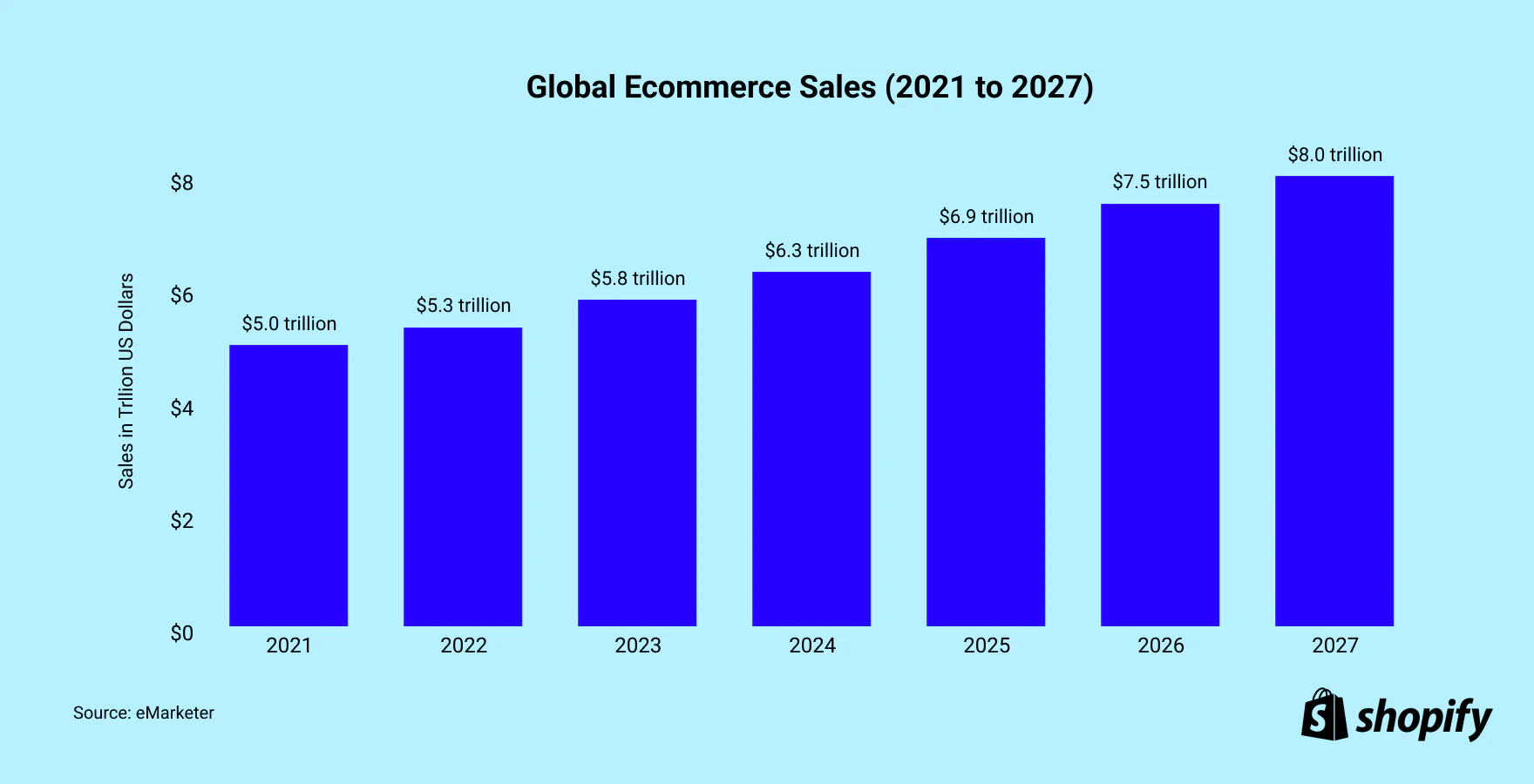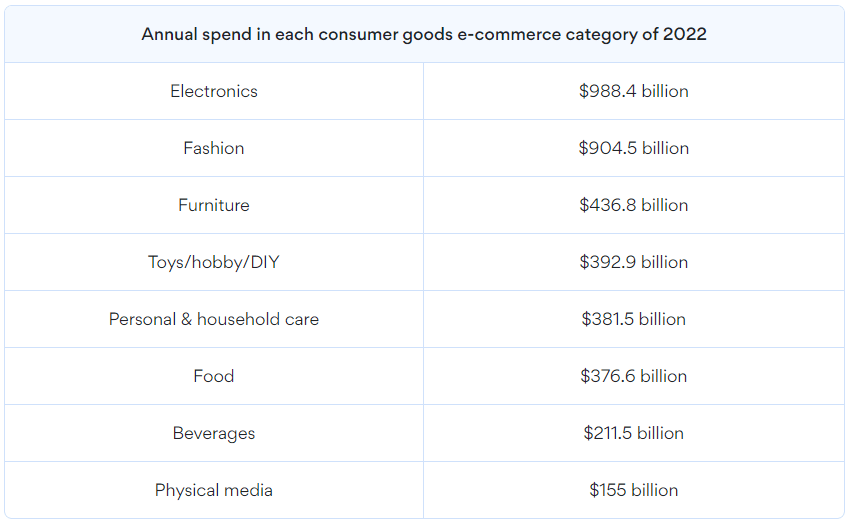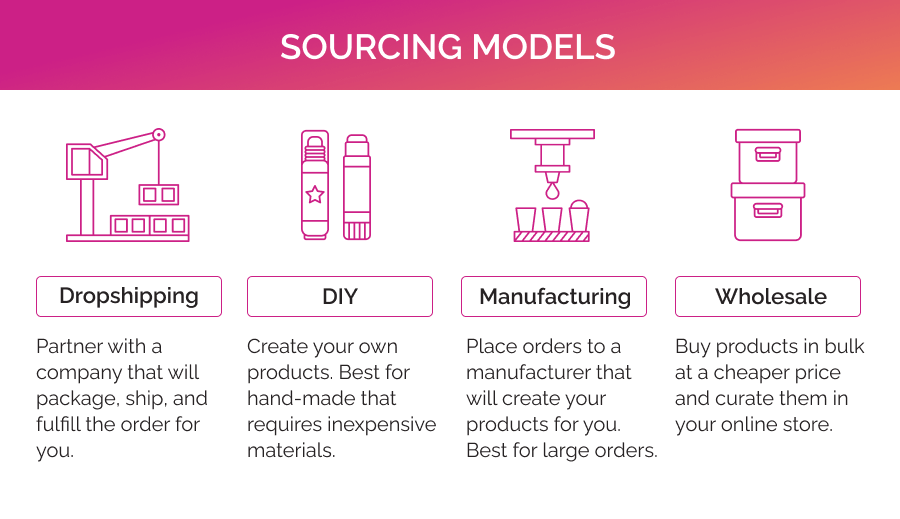Have you ever dreamed about starting an e-commerce business, but didn’t dare to take the leap?
While building a thriving e-commerce requires effort and dedication, it can also provide a great stream of income, once your business is up and running.
In this guide, we’ve put together 5 key steps that will help you design, build, and launch your first e-commerce business together with tips on:
-
initial costs and when to expect to start making a profit
-
how to decide what to sell and product opportunities for first-time e-commerce entrepreneurs
-
insights on building your online e-commerce store
Why start an e-commerce business in 2024?
If you're thinking about diving into e-commerce entrepreneurship, consider this the sign you’ve been waiting for.
Why?
Because 2024 marks the year of promising forecasts for online stores.
According to a Shopify report, global e-commerce sales have seen a year-after-year growth, culminating with a 9.4% increase in 2024. This is the second-fastest growth rate in the forecast period between 2021 and 2027.

Whether you pursue it full-time or as a side gig, e-commerce holds a promising future. Shopping habits haven’t gone back to pre-COVID days, which means more people prefer to shop online than visit brick-and-mortar stores, and e-commerce doesn’t show signs of slowing down.
What type of e-commerce business is most profitable?
E-commerce businesses can range from a small shop you run from your living room to multi-million dollar companies like Amazon. Two of the most popular e-commerce business models include:
- B2B e-commerce: sells products that are typically required in bulk or regularly by businesses.
- B2C e-commerce: caters directly to end consumers by selling a variety of products, from everyday items like clothing and cosmetics to specialized goods.
Of course, each business model comes with its markets, so understanding what niche would be most profitable for you is crucial. A good place to start is by looking into general markets that attract the most buyers.
Based on recent industry stats, electronics and fashion hold the top spots for consumer goods, followed by furniture and toys/hobby/DIY.

Source: Upmetrics
Once you’ve identified your general market, you can narrow it down to a niche that is still competitive without being oversaturated by big brands.
For example, if you’re in the fashion e-commerce business, you can look into different subcategories like vintage pieces or plus-size clothing.
How much does it cost to start an e-commerce business?
The cost of getting an e-commerce business off the ground depends on many factors - your business model, type of products, how you are sourcing your products, and the complexity of your e-shop.
However, there are some operational expenses any e-commerce business will need to cover. It’s a good idea to write these down during the planning phase and separate them into one-time costs and recurring costs.
This way, once you’ve put down the initial investment, it will be easier to estimate the monthly budget you need to pay off ongoing expenses.
One-time initial costs
-
Legal fees associated with registering your business.
-
Purchasing a domain name and setup fees.
-
Costs associated with building and customizing your e-commerce (storefront, implementing payment options, UI tweaks, etc.)
-
Designing your logo and brand identity.
Recurring costs
-
Website maintenance, hosting fees, and domain renewal.
-
E-commerce platform subscriptions.
-
Costs associated with restocking your product inventory and shipping orders.
-
Marketing and advertising costs.
How long does it take to have a successful e-commerce business?
Some e-commerce businesses may achieve initial success within a short time, especially if they tap into a high-demand niche. But don’t measure your success only as profitability, especially in the first year.
Instead, focus on aspects that provide a better measure of your initial progress, like reaching a certain number of website visitors or generating consistent, even if smaller, sales.
It’s always good to remember that this is a long-term journey, not a sprint. Realistically, most e-commerce businesses start to gain traction and experience significant growth after 2-3 years. So give yourself enough time to experiment and scale.

Source: Figma Community (Samuel Godis)
5 steps: how to build and launch an e-commerce business
If you want to open an e-commerce store, you are probably already thinking about what products are in demand, who your competition is, or how you will attract customers.
There are a lot of things to consider, but don’t worry - to figure this out let’s have a look at 5 key steps you can take toward e-commerce success:
Step 1. Research products to sell and find your niche
E-commerce can be quite competitive, so one of the first steps is identifying what sets you apart from other businesses.
What is your area of expertise?
How do these skills fit into the market?
What type of products do you want to sell?
By answering these questions you will understand what the right niche is for you. You can think of e-commerce niches as segments of the market other businesses don't satisfy. This becomes an opportunity you can capitalize on, especially if you already have skills in that area.
Physical versus digital products
When researching products to sell, probably one of the biggest decisions is whether you want to commercialize physical or digital products.
Digital products to sell online include e-books, software and apps, illustrations and visual assets, online courses, templates - anything that is created and consumed electronically.
Digital products can be an attractive entry point into the world of e-commerce. There's no need for physical materials or storage space and they can be delivered instantly to customers through downloads or online access.
On the downside, popular niches for digital products can be quite competitive and susceptible to piracy and Intellectual Property theft.
Choosing your e-commerce niche
Being strategic about your product and market selection is key. A significant mistake first-time entrepreneurs make when choosing a niche is not taking into account these aspects:
Passion and expertise: Start with what you know and love. Building a business around your existing interests and skills is not only rewarding, but it can also be a key differentiator.
Visibility: Is your niche market visible enough and do people search for these products? Use social listening, trend research, and SEO tools to determine if this market is a viable choice.
Niche communities: A good niche market caters to a well-defined audience with very specific interests, needs, and hobbies. Research these communities of passionate followers to offer products tailored to them.
Profitability potential: Low competition is good, but sometimes it might be a sign the niche isn’t very profitable. Does your chosen market have enough potential? Does it offer upselling or cross-selling opportunities or are you locking your brand into a confined category?
Step 2. Consider the logistics
Once you have a clear idea of what to sell and to whom, you will need to consider the logistics.
How do you plan to get the items you want to sell and ship them to customers?
Decide how you will source your products
Dropshipping has become an increasingly popular option for e-commerce stores to sell products without dealing with inventory. Dropshipping involves partnering with another company that will package, ship, and fulfill the order for you.
While dropshipping is a solid option since you don’t have to worry about storage costs, it also has its downsides - like a higher wholesale price on each product. This is why it’s important to evaluate each sourcing option based on your own needs and available budget.
Some of the other options include:
-
Making your own products - this option works great for handmade products that don’t take long to make and require basic, inexpensive materials like candles or pottery.
-
Partnering with a manufacturer - if you don’t have the tools to make products or it’s too expensive to create them from scratch, you can partner with a manufacturer, although be ready to place and pay for large orders.
-
Buying products wholesale and reselling them - while you don’t control the price, this model has the advantage of buying products cheaper and curating them in your online store.

Step 3. Write a business plan and register your business
After you establish all these core aspects of your e-commerce, including the target market and sourcing model, you’re ready to draft a business plan. A well-thought-out business plan doesn't just help you get organized, it can also be used to attract potential investors.
If you want to read more, check out our article on how to create a business plan that will get you funded.
What should you include in the business plan?
Your business plan acts as a blueprint that covers everything from financial aspects to marketing and operations. A good rule of thumb is to have separate sections for each of the following points:
Executive summary - besides an overview of your products or services, here you can highlight your mission statement and unique selling proposition (USP) to show investors and employees your values and key differentiators.
Marketing and sales strategy - outline your marketing and sales approach, including how you will attract customers, drive traffic to your website, and convert leads into sales.
Operations and management: detail the operational aspects of your e-commerce business and how you will provide products.
Financial projections: estimate your financial performance over the next three to five years and look into potential risks and challenges that could impact your profitability.
Setting up your business name and legal structure
You can’t start an e-commerce business without tackling the legal aspects. After you decide on a business name, you will have to register your business by choosing a legal structure.
Typically, you can select from a general partnership, LLC, corporation, or sole proprietorship.
Depending on your type of business, you might also need to apply for additional licenses like trade licenses for certain industries. You should also consider opening a dedicated bank account to keep personal and business finances separate.
Step 4. Build your e-commerce website
Creating your e-commerce platform is an essential step in setting up your online business.
Essentially, an e-commerce platform is the software you use to build your online storefront and the functionality behind it.
Off-the-shelf or custom e-commerce?
One of the first decisions when you start your e-commerce site is the look and feel of your store.
Is a ready-made solution enough for your requirements or do you need to build it from scratch?
How much time and money are you willing to invest in customization?
If you are a very small business or just experimenting with e-commerce for the first time, an e-commerce website builder is a good place to start. Popular options include Shopify, WooCommerce, Squarespace, and BigCommerce. With drag-and-drop functionality and a variety of templates to choose from, you can build a professional-looking online store with little to no coding.
However, off-the-shelf solutions are built to cater to a wide range of businesses. This means customization options are limited and you won’t have full control over the design, layout, or functionality.
It’s also trickier to scale - many off-the-shelf solutions look cheap, but the price grows exponentially once you add extensions, integrations, and advanced features.
For example, on average, a pre-built Shopify theme costs around $120. However, a custom website theme can reach up to $5,000, and for more complex use cases, costs can exceed $25,000.
How outsourcing can transform your e-commerce business
As your business grows, you may find that you require more advanced features and customization options that may not be available on certain e-commerce website builders. To ease the load of building and scaling your e-commerce business, you might want to consider outsourcing the development of your online store.
The main benefit of software development outsourcing is that you won’t need to focus so much on infrastructure. Without this diversion, you can focus on what you do best - sell online, and ramp up operations faster.
However, infrastructure support doesn’t just stop at software development. Depending on your needs, you can outsource various aspects of your business, from order fulfillment and customer service to security and ongoing technical support.
Key features and integrations for an online store
Success in today’s highly competitive marketplace also depends on how user-friendly your e-commerce is and how well it leverages integrations. You want a seamless UX that spans the range of the entire customer journey and the right integrations to boost your functionality.
When it comes to today’s e-commerce, cross-platform capabilities, chatbots, fast loading speed, and secure payment options are just a few of the basic requirements. If you want to read more about must-have features for a modern online store, also check out this article.
Integrations are an important aspect you need to take into account when building your e-commerce. They connect your store to various software applications like:
-
Integrations with popular carriers such as UPS, FedEx, and USPS so customers can easily track their orders.
-
Payment gateway integrations with platforms like PayPal, Stripe, and Square enable secure payments and offer customers a variety of payment methods.
-
Integrating CRM systems helps businesses manage customer interactions and personalize marketing efforts based on collected data.
-
Integrations with customer support software and chatbots enhance customer service through faster response times.
Step 5. Launch and drive traffic to your e-commerce online store
Congrats!
Once you have successfully launched your e-commerce store you can begin to bring in customers and monitor progress as you go.
Your previous market research will once again come in handy to help you determine where to run ads and how to create content that attracts your target audience.
Marketing your e-commerce business
To drive traffic to your e-commerce and brand, it’s a good idea to experiment with different types of marketing strategies. Don’t rely on only one method to market to your customer base.
Instead, look into various channels you can reach out through, including:
-
Social media content and paid social media ads
-
Sending out targeted email campaigns and newsletters
-
Optimizing your e-commerce platform for search engines
-
Partnering with influencers to promote your products
-
Collaborating with affiliates who promote your products in exchange for a commission
Going from business idea to e-commerce success
Whether you want to build e-commerce from scratch or extend your store’s existing capabilities, working with an external consultant can give you that extra edge.
When a business reaches a certain size, looking towards custom software development instead of SaaS integrations and off-the-shelf e-commerce solutions is the next logical step.
At ETEAM we build the e-commerce technology that powers the best customer experiences, from chatbots and omnichannel shopping to digital wallets and AI-powered product recommendations.
If you are interested in a similar solution for your e-commerce, we offer a free consultation to explore what technologies would work best for you.








